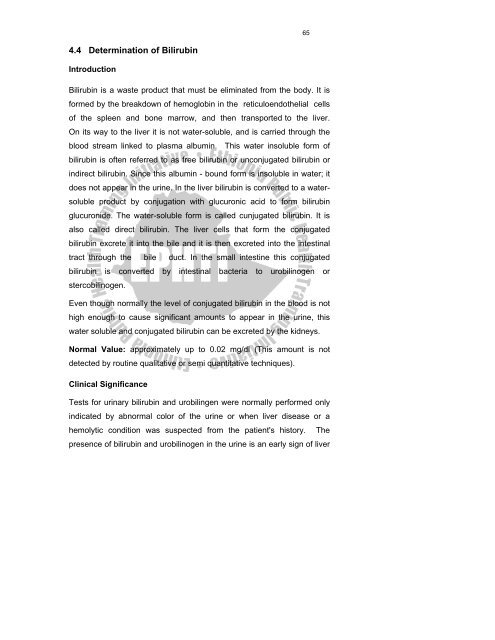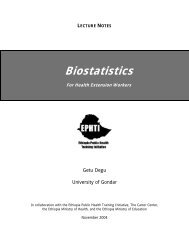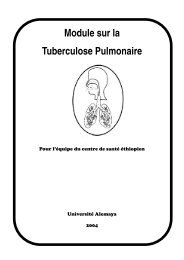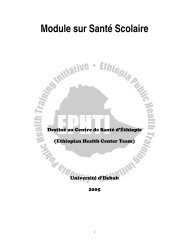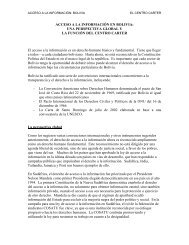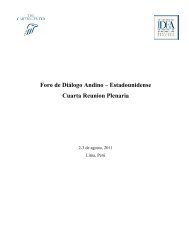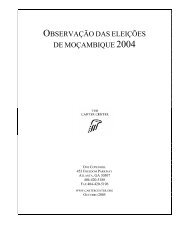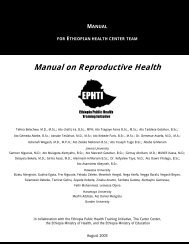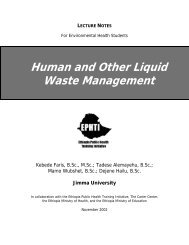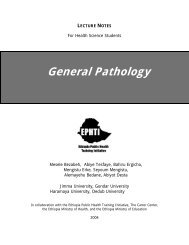Urinalysis - The Carter Center
Urinalysis - The Carter Center
Urinalysis - The Carter Center
Create successful ePaper yourself
Turn your PDF publications into a flip-book with our unique Google optimized e-Paper software.
65<br />
4.4 Determination of Bilirubin<br />
Introduction<br />
Bilirubin is a waste product that must be eliminated from the body. It is<br />
formed by the breakdown of hemoglobin in the reticuloendothelial cells<br />
of the spleen and bone marrow, and then transported to the liver.<br />
On its way to the liver it is not water-soluble, and is carried through the<br />
blood stream linked to plasma albumin. This water insoluble form of<br />
bilirubin is often referred to as free bilirubin or unconjugated bilirubin or<br />
indirect bilirubin. Since this albumin - bound form is insoluble in water; it<br />
does not appear in the urine. In the liver bilirubin is converted to a watersoluble<br />
product by conjugation with glucuronic acid to form bilirubin<br />
glucuronide. <strong>The</strong> water-soluble form is called cunjugated bilirubin. It is<br />
also called direct bilirubin. <strong>The</strong> liver cells that form the conjugated<br />
bilirubin excrete it into the bile and it is then excreted into the intestinal<br />
tract through the bile duct. In the small intestine this conjugated<br />
bilirubin is converted by intestinal bacteria to urobilinogen or<br />
stercobilinogen.<br />
Even though normally the level of conjugated bilirubin in the blood is not<br />
high enough to cause significant amounts to appear in the urine, this<br />
water soluble and conjugated bilirubin can be excreted by the kidneys.<br />
Normal Value: approximately up to 0.02 mg/dl (This amount is not<br />
detected by routine qualitative or semi quantitative techniques).<br />
Clinical Significance<br />
Tests for urinary bilirubin and urobilingen were normally performed only<br />
indicated by abnormal color of the urine or when liver disease or a<br />
hemolytic condition was suspected from the patient's history. <strong>The</strong><br />
presence of bilirubin and urobilinogen in the urine is an early sign of liver


